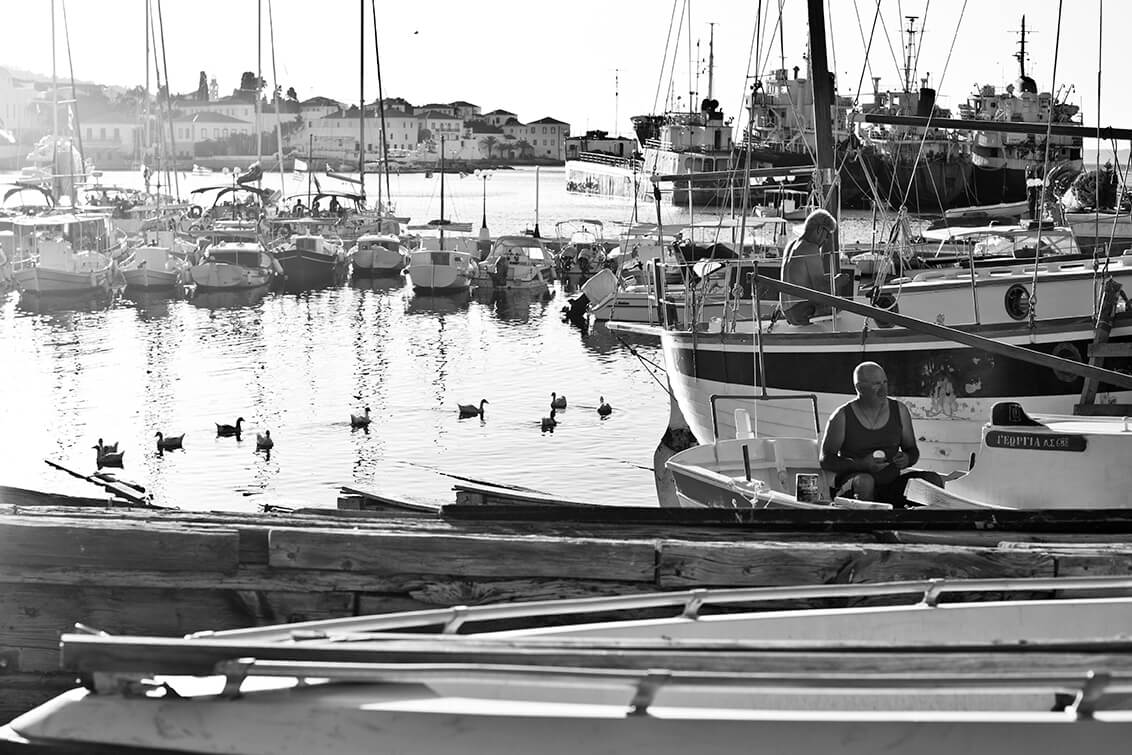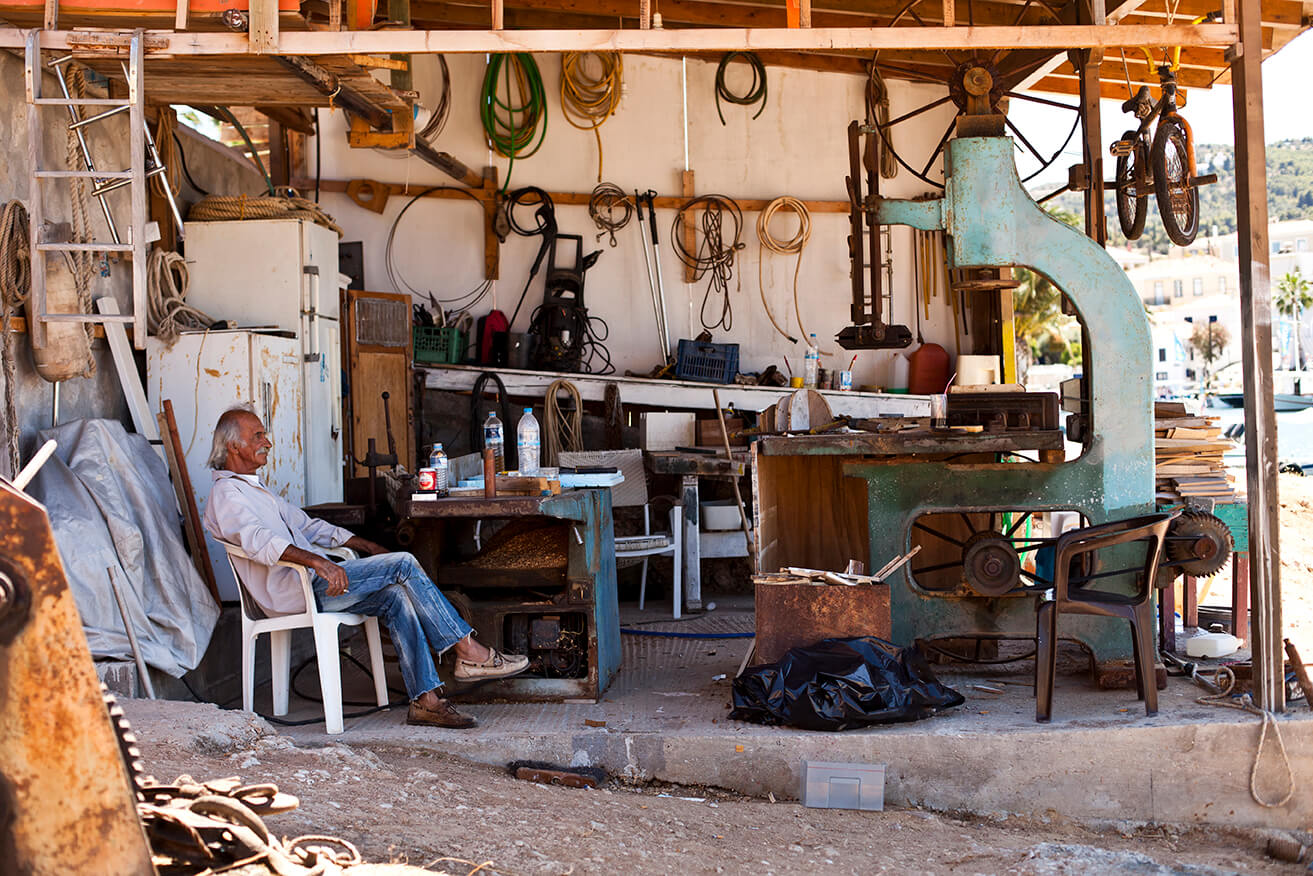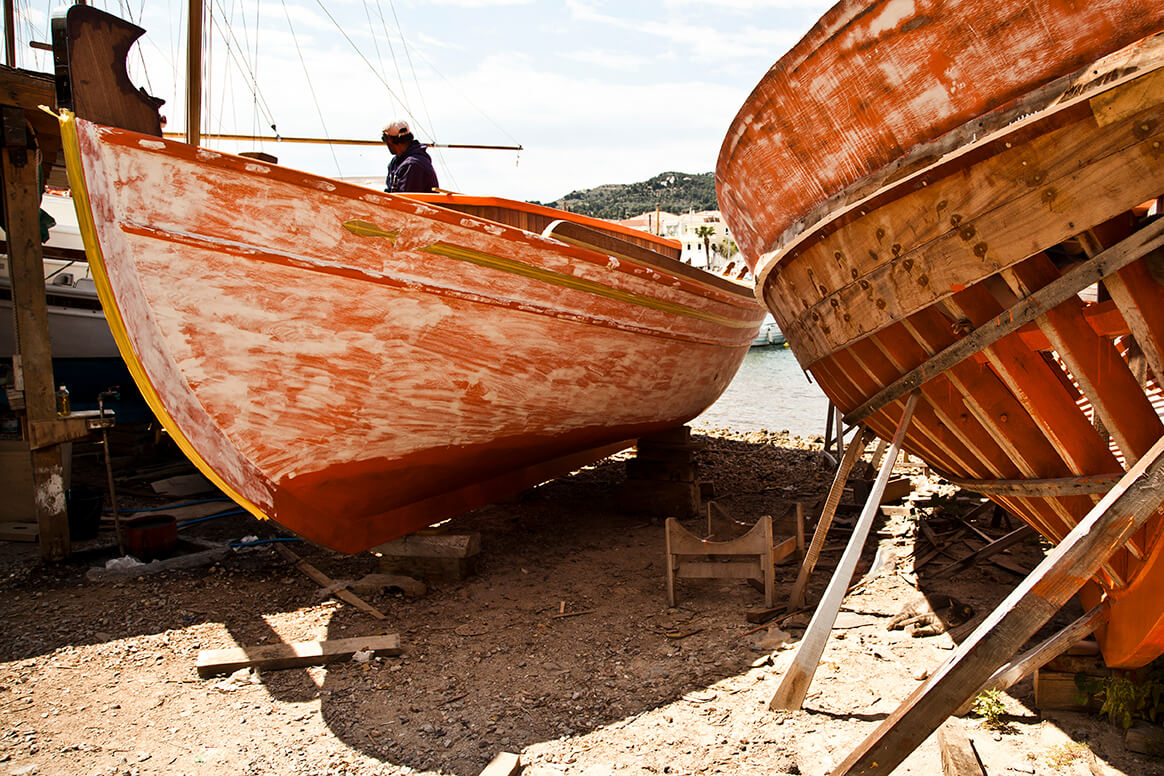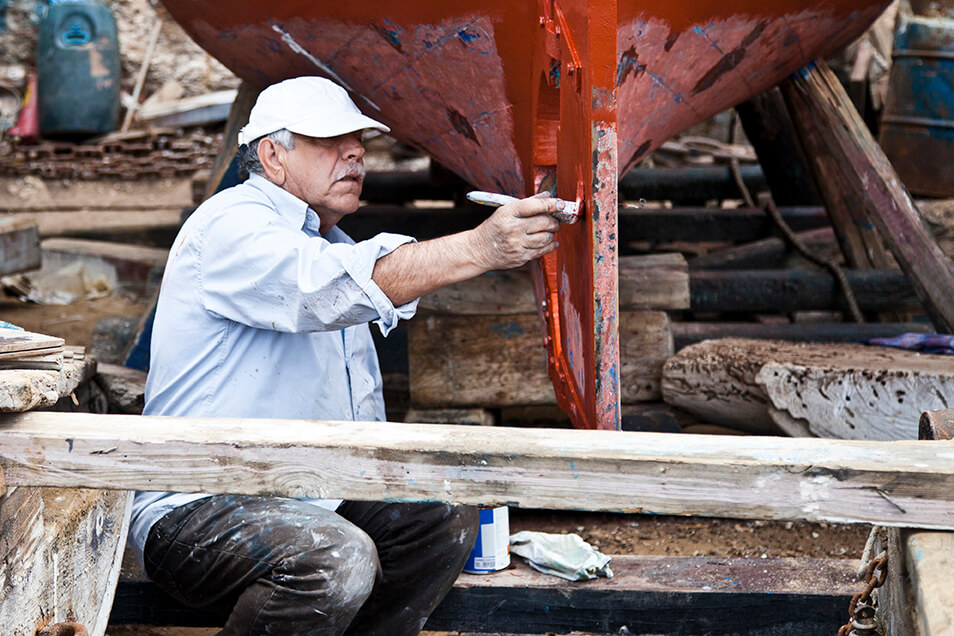The traditional shipyards, also known as the “karnagia”, deriving from the Italian word “carena”, the part of the boat that is under the sea, have a longstanding history in Spetses, even to this very day. Walking through the Old Harbour you will witness several traditional shipyards that still build gorgeous caique boats and repair older ones.
As a craft that many may believe is becoming extinct due to the overruling presence of plastic boats, the Spetses karnagia contradict this by keeping the art form alive. Furthermore, a few years ago the first e-caique boat, running on electricity, was built in the Spetses shipyards proving that it is an evolving, rather than a dying craft.
Spetses is, after all, renowned for its deep seafaring history and has always traditionally been connected to sailing. In the Golden Era of Spetses prime, the 18th century, Spetsiotan ships sailed all over the Mediterranean Sea as merchants, mostly trading wheat. The majority of these ships were built in Spetses’ shipyards, as the use of pine wood made strong boats able to hold large amounts of cargo and in 1868 Spetses had the second largest production of ships after the island of Syros.
The naval and merchant presence of Spetsiotan vessels brought vast riches and wealth to the captains and subsequently to their island. This is evident until today through the grandiose architecture and the stunning traditional mansions in Spetses, also known as the Kapetonospita (Captains’ Houses). Apart from the impressive exteriors with the high walls for protection from raids, the interior of these Captain Houses are also a spectacular sample of the wealth that the Spetsiotans acquired. Objects and furniture from all over Europe made up for a cosmopolitan and grand lifestyle that exceeded the architecture of the Spetsiotans’ homes, as their broadened horizons gave them an intellectual and cultured viewpoint. Most of the captains were educated, while some even educated their wives and daughters, and were able to converse in many languages and dialects, from the local Arvanitika to French! Finally, the wealth and naval power they gained offered the Spetsiotans the means, along with their courage and will, to join the Greek War of Independence, first amongst all the Greek islands.
Today, these Captain Houses either resold or still owned by the same Spetsiotan families, are an integral part of Spetses majestic aura that enchants visitors while walking through the alleyways amongst these gems. For historical, cultural and aesthetic purposes, this is why Spetses has been acknowledged as a historically preserved location.



